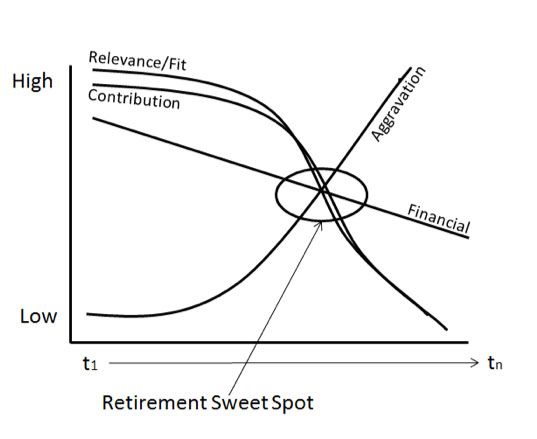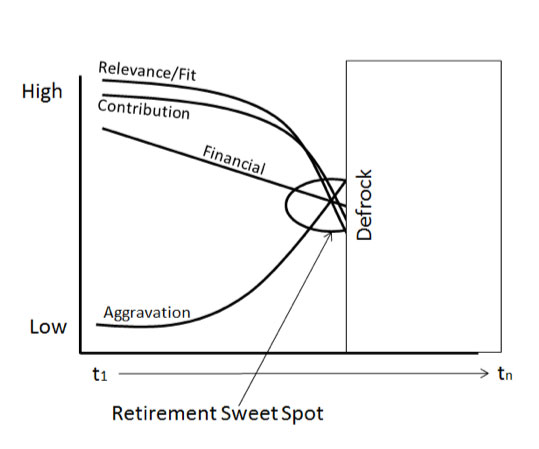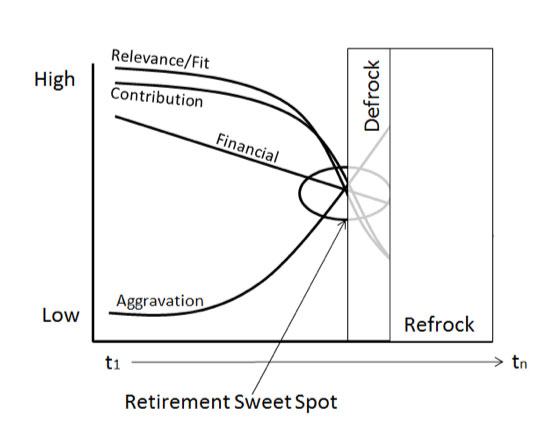Editor’s note: Now retired, Greg Rathjen was a principal of Marketecture, an Alpharetta, Ga., research firm.
It was the Tuesday after Groundhog Day and I was taking a cab from my hotel to a scheduled client meeting when I got the call from the client I was about to meet with. The call was unexpected. The meeting wasn’t out of the ordinary, just a planning meeting around an overdue segmentation study including deep dives into question writing. So I answered with trepidation:
“What’s up? I’m about 10 minutes out.”
….
“She did that again? I’m stymied. So, the project is off. Again. What’s the deal this time?”
….
“Well I assume we can still meet. We’ll need to figure out how to tell the suppliers involved; what to do with the advance check I haven’t cashed yet; figure out ways to fill in the info gaps we planned to address. Oh, well. Kind of a downer, eh?”
….
“Thanks for the heads-up. See you in a few minutes.”
The groundhog was right – it was going to be a long winter.
Being on the down side of mercurial decision-making wasn’t new for me. It was one of the reasons I went out on my own to offer project-based marketing research: propose the project, execute the research, do the analysis, write the report, avoid politics, send the invoice and move on. This time, though, the politics triggered a surprising degree of aggravation. My frustration kept growing as past work was demeaned or ignored and future research scrutinized, willy-nilly canceled or, in some cases, arbitrarily sent elsewhere. Anyone in business very long has encountered the disruptive impact of the big name consulting firm and this, too, might have been shrugged off, if in isolation.
My own world was in flux as I’d turned 70 and been encouraged by my spouse to face the big R. The decision to retire was a difficult one that I’d been avoiding and dreading. I’d asked retired friends and former research colleagues about how they reached their decision to retire. No one offered an algorithm. Most concluded it was more a gut feeling than a rational choice.
So that morning, with two clients in flux and uncertainty, my knee-jerk emotional response was to conclude that the sun, moon and stars were aligning to tell me it was time to retire. By the time I got to the meeting I’d decided to share my intentions to do just that.
The retirement algorithm
Retirement wasn’t just a gut call. I did do some critical thinking before announcing to the world. I clearly was experiencing an upward curve on my aggravation metric. The aggravation was not just about specific decisions that directly affected me. I had grown deeply attached to wanting my clients to succeed. I was also arrogant enough to think that their success was more likely achieved based on my contributions or my insights about what they needed. Not surprisingly, I had to admit that my personal contributions metric may well have been on decline, or may have been doing better in my mind than in theirs. With a rise in aggravation and a corollary decline in worth to the client, I also had to gauge my fit in a changing environment – a culture connect metric. Companies and new hires appeared more focused on short-term goals, financial transactions, quick turnarounds, simplified, less nuanced takeaways and reliance on do-it-yourself marketing research. My old-school deep dives and systematic methodologies were growing increasingly out of synch.
Of course, I had to consider the money metric. Did I need more, symbolically or literally? Money, gratefully, was not a factor. So, if I didn’t need the money, didn’t need the aggravation and wasn’t contributing in valued ways and wasn’t fitting in, the retirement sweet spot surely must be at hand.

A year later, I’ve had to reassess my calculations and admit that I really didn’t hit the retirement sweet spot. There was one critical miscalculation that I should have incorporated. In fact, one of the speakers at my father’s funeral several years ago used a metaphor that should have given me a clue about what I missed. He talked about life in retirement as a slow and lengthy defrocking. The speaker shared my father’s status as a man of the cloth, so the reference was more than just a metaphor for them. While some professional losses of stature and removal from positions of honor are due to disgraceful behavior and viewable as a kind of defrocking, his was only for the misfortune of aging.

While not a man of the cloth, the notion of a defrocking of sorts should have been included in my retirement calculus. For the past 10 years, I’ve watched a variety of retirements with their attendant rituals and signatures. For friends in the corporate world it usually entailed announcements, parties and office ceremonies (the watch, the plaque), followed by a slow but unmistakable disappearance. For friends in the self-employed world it usually meant an announcement, some client send-offs and the same disappearance. A few just disappeared. My academic friends had all the ritual celebrations and ceremonies while also being granted a new honorary exit title: emeritus. In the end, though, while an honor, it still meant disappearance, permission to be forgotten.
My formal departure was pretty straight forward. As a self-employed gig consultant, I’d worked with close to 100 companies. Many were one-time projects, while several extended five-to-10 years, with three that lasted over 25. I’d been fortunate to work with clients who became friends and with brands I felt committed to and passionate about. My retirement ritual was the lunch conversation with those who were still part of my practice and the e-mail notice to former clients and strategic partners.
I then took the initiative to defrock more seriously and more aggressively. I started by cleaning out boxes and boxes of files. I got rid of 1,000 pounds of transcripts, proposals and reports. I gave away tools I’d created for focus group exercises. I stepped away by reducing my visits and phone calls to clients and old partners. I trained myself not to forward articles or news items that would have been of importance to share before. I unsubscribed to the endless pitches for new software or facility rentals. I plunged into lawn mowing and DIY projects around the house.
But before formal retirement, I should have built in a defrocking preparation metric: a measure that would have forced me to think about what I was escaping to as much as what I was escaping from. Without that calculation, I found myself in a sort of defrocking free-fall. In the formal sense, it was not all that different from those I’d observed but its emotional toll was surprising.
New endeavors
Still to be done is a re-frocking. If I’d been smarter I would have studied my retired friends to discover how they had re-invented themselves, what they had done to build new positions of honor, to earn the right to exercise rites in the service of new endeavors. I’m searching, considering. Matters I should have undertaken before and required as a settled pre-condition of retiring.

Progress is being made. I’m starting to read for the blind. I’m entertaining working with our local food bank. I’ve explored serving on non-profit boards. I’m considering plunging into public service via local committees or political party actions. I’m not ready for assisted living, for bridge and scrabble. That’ll have to wait until I am closer to my father’s 92 years and I’ve created a new algorithm.
